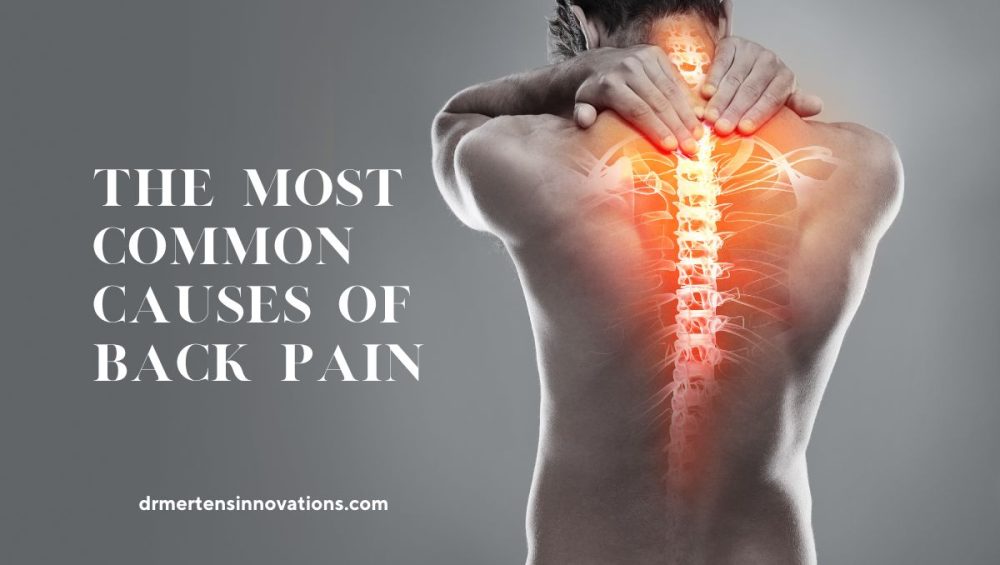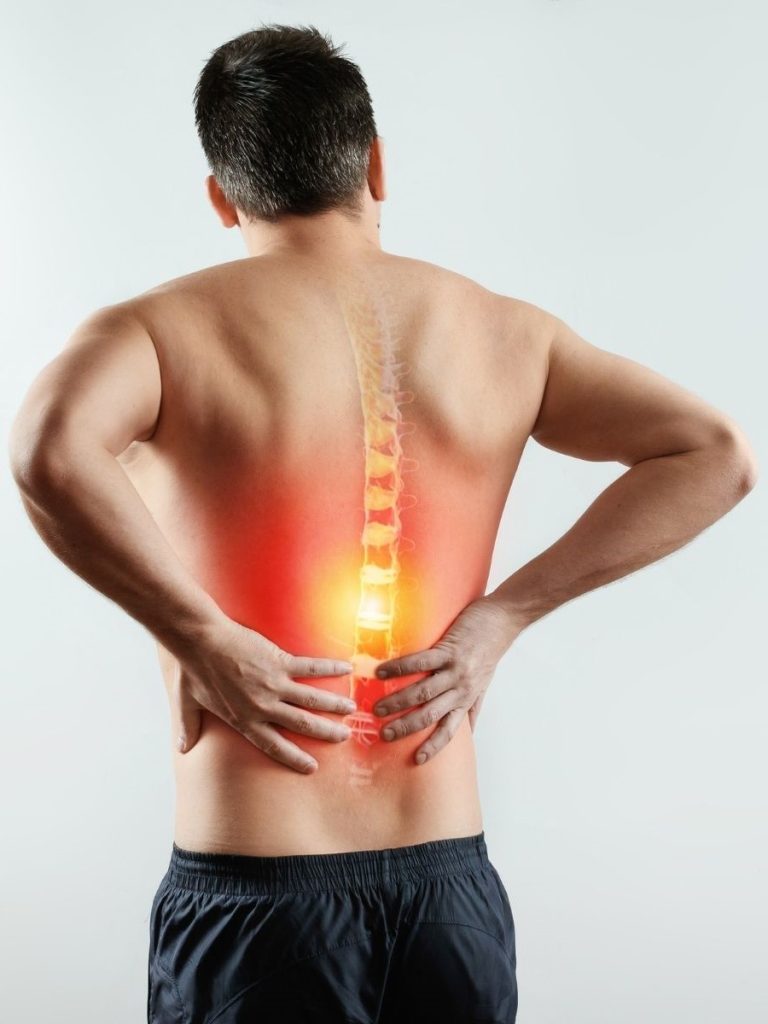What are the most common causes of back pain?

Back pain can have various causes, and it’s essential to determine the specific cause to receive appropriate treatment. Some common reasons for back pain include:
Herniated Disc: A herniated or slipped disc can put pressure on nerves in the spine, leading to back pain. This condition can result from age-related degeneration or injury.
Spinal Stenosis: Spinal stenosis is the narrowing of the spinal canal, which can put pressure on the spinal cord and nerves, leading to pain, numbness, or weakness.
Osteoarthritis: Arthritis can affect the spine’s facet joints and lead to pain and stiffness in the back.
Scoliosis: Scoliosis is an abnormal curvature of the spine, which can cause back pain, especially in severe cases.
Spondylolisthesis: This condition occurs when one vertebra slips forward over another, leading to pain and nerve compression.
Injuries: Traumatic injuries, such as fractures, dislocations, or muscle sprains, can cause acute back pain.
What factors can trigger back problems?
Lifestyle Factors: Sedentary lifestyles, smoking, and poor physical fitness can contribute to back pain.
Muscle or Ligament Strain: This is one of the most common causes of back pain. Straining the muscles or ligaments in the back can occur due to lifting heavy objects, sudden movements, or poor posture.
Poor Posture: Maintaining poor posture over time can strain the muscles and lead to chronic back pain.
Obesity: Excess body weight can put additional stress on the spine, leading to back pain.
Medical Conditions: Certain medical conditions, such as kidney stones, infections, or endometriosis, can cause referred pain that is felt in the back.
Psychological Factors: Stress, anxiety, and depression can sometimes manifest as physical back pain.
What can be done to reduce back pain?
To avoid back problems and reduce pain, it is important to pay attention to your lifestyle. It all starts with maintaining proper posture. Try to keep a straight back when sitting and standing, as this will reduce the strain on your back. Regular physical exercises will help strengthen the muscles of your back, lowering the risk of pain. It’s also important to know how to lift weights properly to avoid straining your back.
Stay active – walks, swimming, and yoga contribute to maintaining a healthy back. Control your weight, as excess weight can increase the load on your spine. A sedentary lifestyle can raise the risk of back pain, so try not to sit for extended periods without breaks and regularly stretch. Quit smoking, as it can worsen the blood supply to your spine. Stress and anxiety can cause muscle tension in your back, so pay attention to relaxation techniques. Create a comfortable workspace to avoid straining your back at work. Also, remember the importance of a good night’s sleep for your back’s health. Lifestyle changes can significantly reduce the risk of back pain and help you maintain a healthy spine.
It’s important to consult with a doctor if you have constant or severe back pain. A doctor will conduct a thorough examination, which may include diagnostic studies, to identify the specific cause of the pain and recommend appropriate treatment methods. Treatment may include physical therapy, wearing special back braces, medication, lifestyle changes, and, in some cases, surgery.

